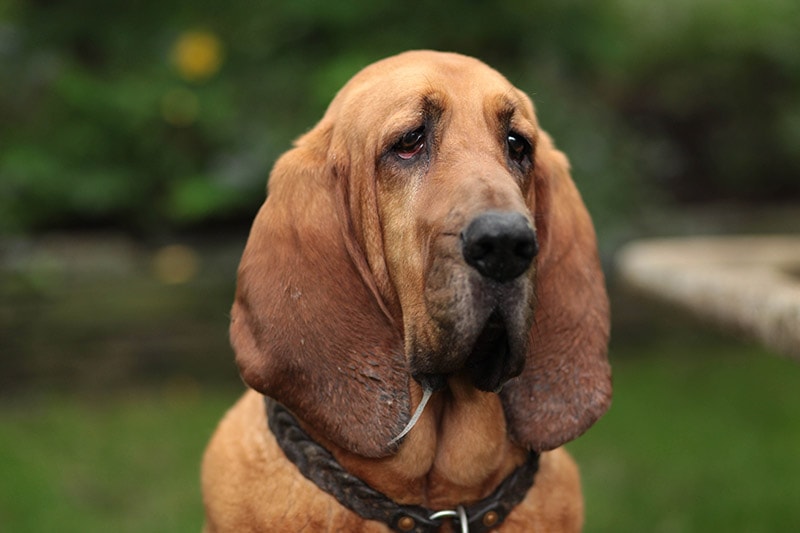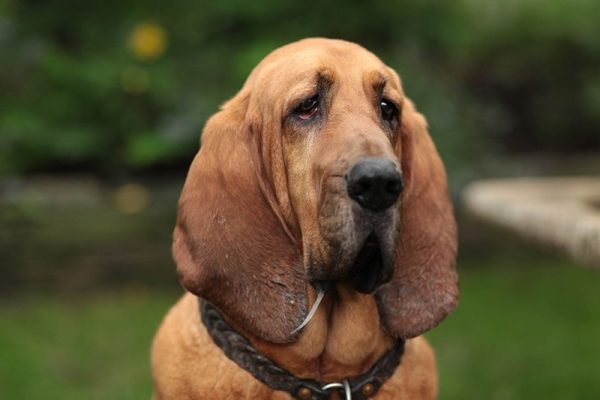Click to Skip Ahead
The Bloodhound is a breed of dog known for its keen sense of smell and tracking abilities. According to the AKC, these dogs only come in three different colors. While you may see other colors advertised, these are not “official” and may be the result of mixing Bloodhounds with other canines. Most quality breeders stick with these three official colors.
Black and tan is the most common combination and the one you probably recognize the most. However, the other two colors are available and not exceedingly rare.
The 3 Bloodhound Colors
1. Black and Tan
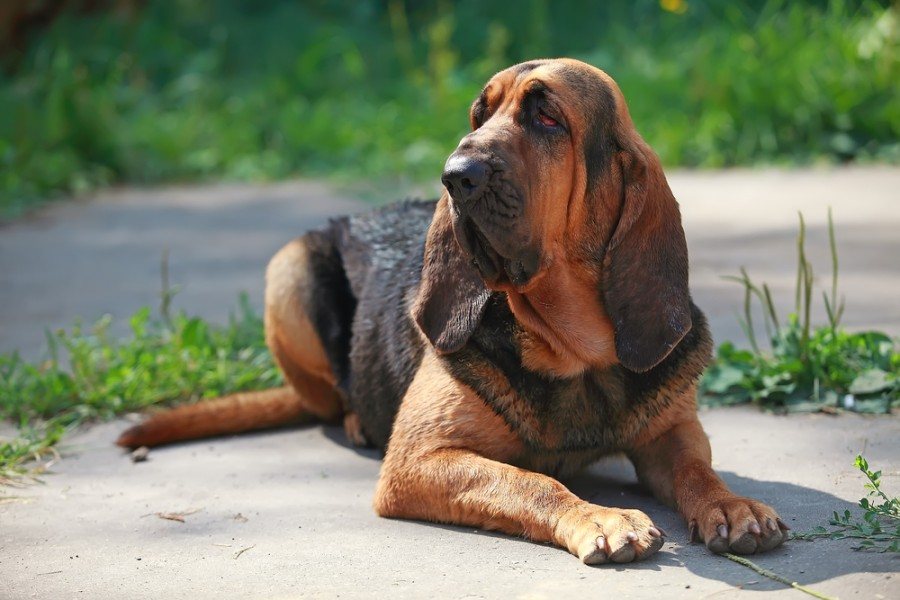
Black and tan is the most recognizable coloration of the Bloodhound. As the name suggests, this color pattern includes both black and tan. The black portions of the coat are usually the dominant color in a black and tan Bloodhound. The black color can range from a deep, dark black to a slightly lighter shade, but it’s typically solid and rich in hue. The black color covers most of the body, including the back, sides, and often the ears.
The tan part comes from the dog’s markings. Usually, dogs with this pattern have extensive tan markings, but they are usually only found on specific parts of the dog’s body, such as the eyebrows, chest, and legs.
Tan markings often appear above the eyes, resembling eyebrows. These markings can vary in size and shape, but they contribute to the Bloodhound’s expressive and soulful look. Some Bloodhounds may have a tan “star” or “blaze” on the chest, while others may have more extensive tan coverage in this area.
Practically all black and tan Bloodhounds have tan markings on their legs, which look like stockings. The lower portion of every leg should be tan. Most also have a tan belly.
2. Liver and Tan
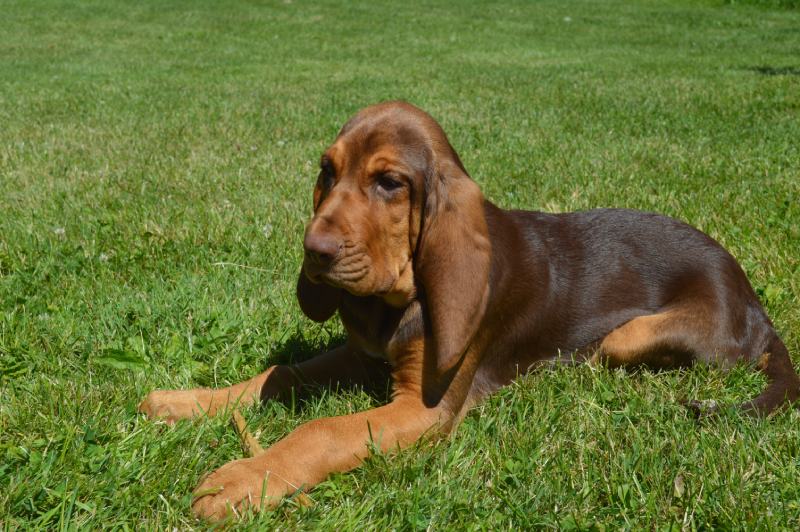
Liver and tan Bloodhounds are extremely similar to black and tan. However, instead of being black, the dogs are “liver.” This coloration is rich, reddish-brown. It can be very deep and darker or lighter. As long as it is reddish-brown, it fits in this category.
The tan markings are exactly the same as in black and tan Bloodhounds. Often, you’ll see tan markings on the dog’s eyebrows, chest, belly, and legs.
3. Red
Red is one of the most uncommon colorations in Bloodhounds, but you still see it from time to time. Unlike the colors we’ve discussed thus far, red Bloodhounds are completely solid and don’t have any tan markings. The exact color can range from deep mahogany to a lighter, reddish hue.
Sometimes, red puppies may be more expensive than other colorations due to their rarity. However, that doesn’t necessarily mean that they are better pets or anything of that sort. It’s just that the demand for these dogs tends to be higher than the supply.
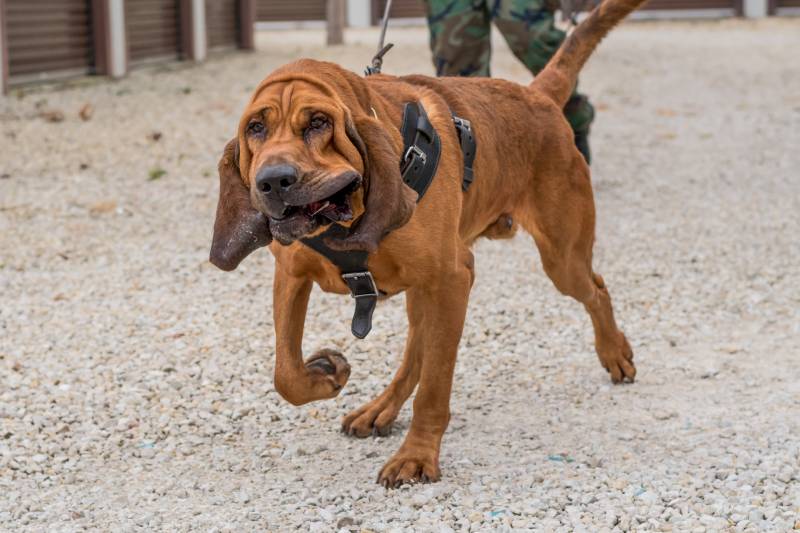
Frequently Asked Questions
Can Bloodhounds Be Solid Black?
Bloodhounds cannot be solid black, according to the American Kennel Club. Other major kennel clubs do not recognize this color, either. Usually, kennel clubs base their accepted colors on what coat patterns appear naturally in the breed.
Therefore, black Bloodhounds may be the result of a random genetic mutation (which would be very rare), or they may be the result of breeding a Bloodhound with a different breed that can be all black (more likely). If someone is selling an all-black Bloodhound, you should be suspicious about their claim.
You could very well not get a purebred Bloodhound when purchasing an all-black dog. While this isn’t necessarily a bad thing, it is important to know what you’re getting and understand that the dog probably won’t act or look 100% like a Bloodhound (because it isn’t one).
Can Bloodhounds Have White?
Yes, Bloodhounds can have white markings on their coat, but these white markings are typically limited and not extensive. The presence of white markings in Bloodhounds is considered normal and can appear in various areas of the dog’s body, such as the chest, feet, and tip of the tail.
In fact, a white spot or patch on the chest is quite common. The large majority of Bloodhounds probably have this marking. However, the white patch should be small and not make up a ton of the dog’s coloration. Many Bloodhounds also have white feet. All their feet may be white, or white may appear on just one or two feet. Once again, these markings should be small and not full-sized stockings (though they can get quite large in some cases).
Bloodhounds can also have a white-tipped tail. This isn’t extremely common, but it isn’t unusual, either. This marking is thought to have helped hunters keep track of the Bloodhound through tall grass, which prevented them from being mistaken for game. In fact, many hunting dogs have white-tipped tails—like Beagles.
White markings may also appear elsewhere on the dog’s body. Sadly, the AKC does not accept markings on any other portion of the dog, so these markings are often bred out purposefully by breeders. For instance, a small white spot on the muzzle rarely occurs in this breed.
What About Other Bloodhound Colors?
You may occasionally come across breeders selling Bloodhounds in other colors. However, these other colors are not recognized by the AKC and likely don’t occur naturally in the breed. It is common to want a uniquely colored dog, but if you’re looking for a Bloodhound, it’s important to actually adopt a Bloodhound—not get fooled by a breeder selling a “rare” mixed-breed dog.
Reputable breeders adhere to breed standards set by kennel clubs like the American Kennel Club (AKC). These standards define the acceptable characteristics of the breed, including coat colors. Bloodhounds with full white coats (or other colors not listed above) are not in line with the breed standard.
Bloodhounds with unusual coat colors, particularly those that stray from the norm, could be the result of breeding practices that prioritize appearance over the breed’s health and well-being. Breeders who focus on producing unusual coat colors might not prioritize genetic health testing, which can lead to potential health issues for the puppies.
Some breeders may intentionally create “rare” or unconventional coat colors to attract buyers, often at the expense of the dogs’ health and ethical breeding practices. This can contribute to health problems and perpetuate harmful breeding practices.
This practice is particularly common among puppy mills, which prioritize producing tons of puppies with little regard for their (or their parents) health.
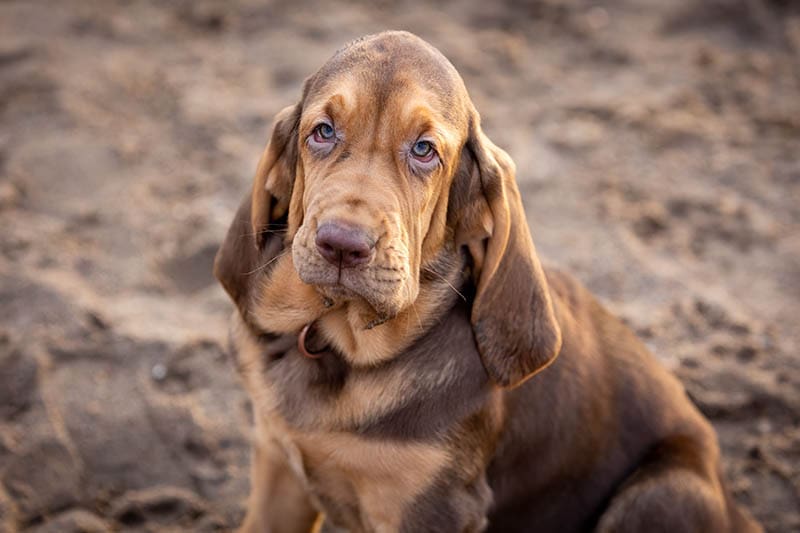
Final Thoughts
Bloodhounds come in three basic color combinations: black and tan, liver and tan, and red. These colors are the only ones recognized by the AKC, though some minor white markings are also okay, according to the club.
As always, when adopting a puppy, prioritize the health and well-being of the dog over coloration. Work with a breeder that does genetic testing and carefully chooses which adults to breed together.
Featured Image Credit: Huckleberry14, Shutterstock

